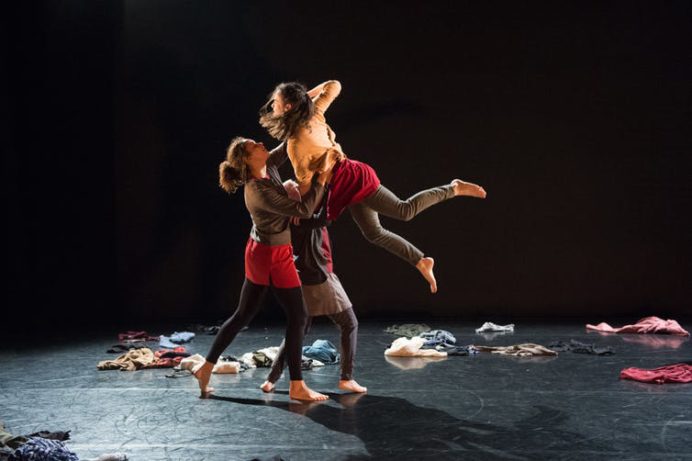There is little more important for the sustainability of cities than the ways we move around them. With transportation estimated to account for 30% of energy consumption across the majority of the world’s most developed nations, reducing the necessity for energy-reliant vehicles is fundamental to addressing the environmental impact of mobility.
But as cities become the predominant habitat for most people in the world, it is important to think about other kinds of sustainability too. The ways we travel impact our physical and mental health, our social lives, our access to work and culture, and the air we breathe. Engineers are tasked with changing how we travel round cities through urban design, but the engineering industry still rests on the assumptions that led to the creation of the energy-consuming transport systems we have now: the emphasis placed solely on efficiency, speed, and quantitative data. We need new approaches in order to help engineers create the radical changes needed to make it healthier, more enjoyable, and less environmentally damaging to move around cities.
And my colleagues and I think that dance might hold some of the answers. That is not to suggest everyone should dance their way to work, however healthy and happy it might make us. But rather that the techniques used by choreographers to experiment with and design movement in dance could offer engineers with tools to stimulate new ideas in city-making. To test this out, a project led by Ellie Cosgrave at UCL is bringing planners and engineers designing systems for urban mobility together with choreographers to see how their practices could enrich one another.
Sociological theory about the nature of work can help us to understand why choreography might help. Richard Sennett, an influential urbanist and sociologist who transformed ideas about the way cities are made, argues that urban design (including, we would argue, engineering and planning as much as it does architecture) has suffered from a severance between mind and body since the advent of the architectural blueprint.
Whereas the medieval builder improvised and adapted construction through their intimate knowledge of materials and embodied experience of the conditions in a site, building designs are now conceived and stored in media technologies that detach the designer from the physical and social realities they are creating. The “disembodied design practices” created by these technologies are essential for managing the technical complexity of the modern city. But they simplify reality in the process.
To illustrate, Sennett discusses the Peachtree Center in Atlanta, a development emblematic of the modernist approach to urban planning prevalent in the 1970s. Peachtree created a grid of streets and towers intended as a new pedestrian-friendly downtown for Atlanta. This, according to Sennett, failed because its designers had invested too much faith in computer aided design to tell them how it would operate.
They didn’t understand that purpose-built street cafes could not operate in the hot sun without the awnings common in older buildings, and would need energy-consuming air conditioning instead, or that its giant car park would feel so desolate as to put people off from getting out of their cars. What seems entirely predictable and controllable on screen has unexpected results when translated into reality.
The same is true in transport engineering, which uses models to predict and shape the way people move through the city. Again, these models are necessary, but they are built on specific worldviews in which certain assumed forms of efficiency and safety are privileged over other experiences of the city. Designs that seem logical in models appear counter-intuitive in the embodied experience of their users.
The guard rails that will be familiar to anyone having attempted to cross a British road, for example, were an engineering solution to pedestrian safety based on models that prioritise the smooth flow of traffic, guiding pedestrians to specific crossing points and slowing them down through staggered access points. In doing so they make crossings feel longer, introducing psychological barriers greatly impacting those that are the least mobile, and encouraging some others to make dangerous crossings to get around them. These barriers don’t just make it harder to cross the road, they sever communities and decrease opportunities for healthy transport. As a result, many are now being removed, causing disruption, cost, and waste.
If their designers had the tools to think with their bodies, and imagine how these barriers would feel, could there have been a better solution in the first place? We think so. In order to bring about fundamental changes to the ways we use our cities, engineering will need to develop a richer understanding of what motivates people to move in certain ways, and how it affects them.
Choreography may not seem an obvious choice for tackling this problem. Yet it shares the aim of designing patterns of movement within spatial constraints. Choreography is an embodied art form developed almost entirely through instant feedback between improvisation of ideas with the body, and tactile feedback from those ideas. It uses models and forms of notation to plan movements that dancers will make, with qualitative as well as quantitative information. Choreographers have an extremely rich understanding of the psychological, aesthetic, and physical implications of different ways of moving.
Observing the choreographer Wayne McGregor, cognitive scientist David Kirsh described how he “thinks with the body”. Kirsh argues that by using the body to simulate outcomes, McGregor is able to imagine solutions that would not be possible using purely abstract thought. This kind of embodied knowledge is given great value in many realms of expertise, but currently has no place in formal engineering design processes.
The value of all this for engineering is currently hypothetical. But what if transport engineers were to improvise design solutions and get instant feedback about how they would work from their own embodied experience? What if they could model designs at full scale in the way choreographers experiment with groups of dancers? What if they designed for emotional as well as functional effects? By comparing the techniques and worldviews of choreography and engineering, we aim to find out.
Originally written in the role of Researcher at UCL STEaPP and published on The Conversation.


